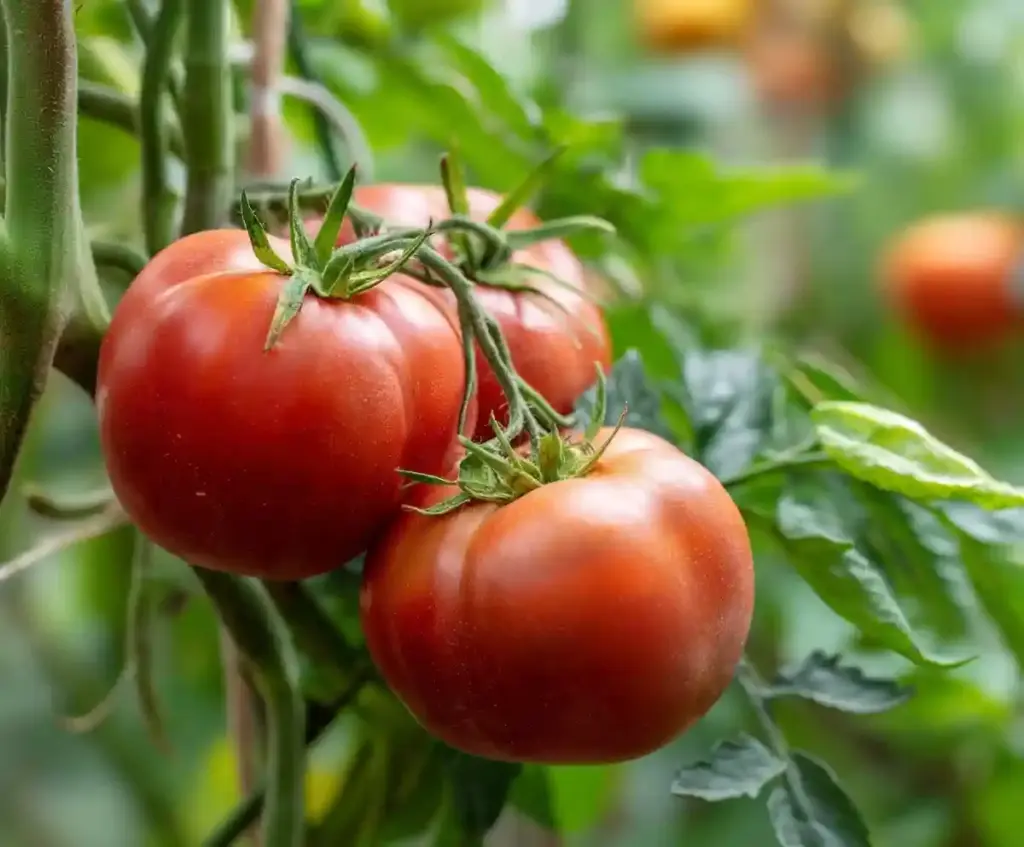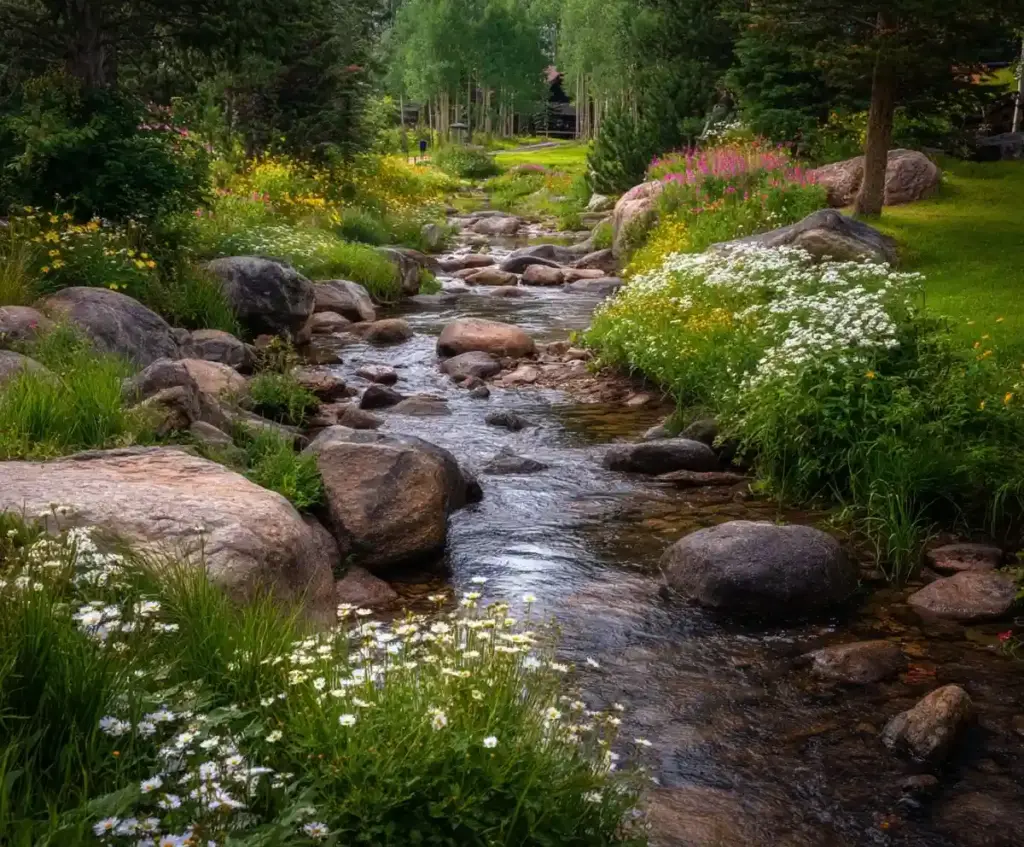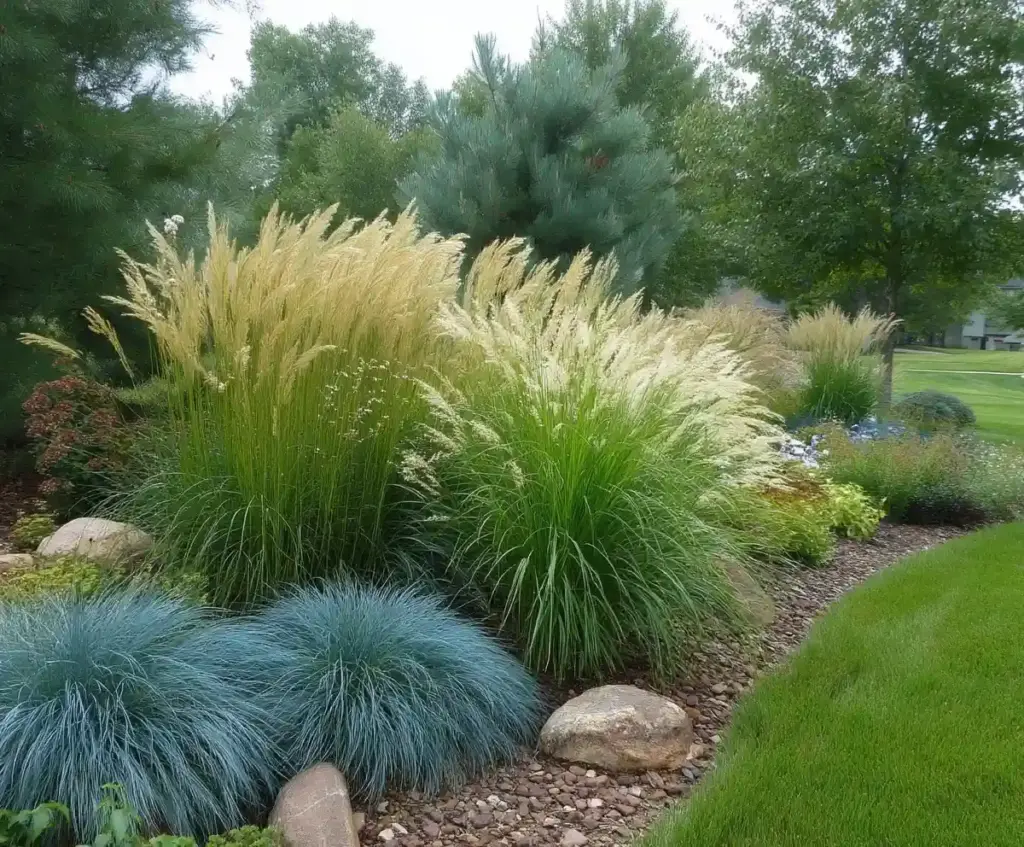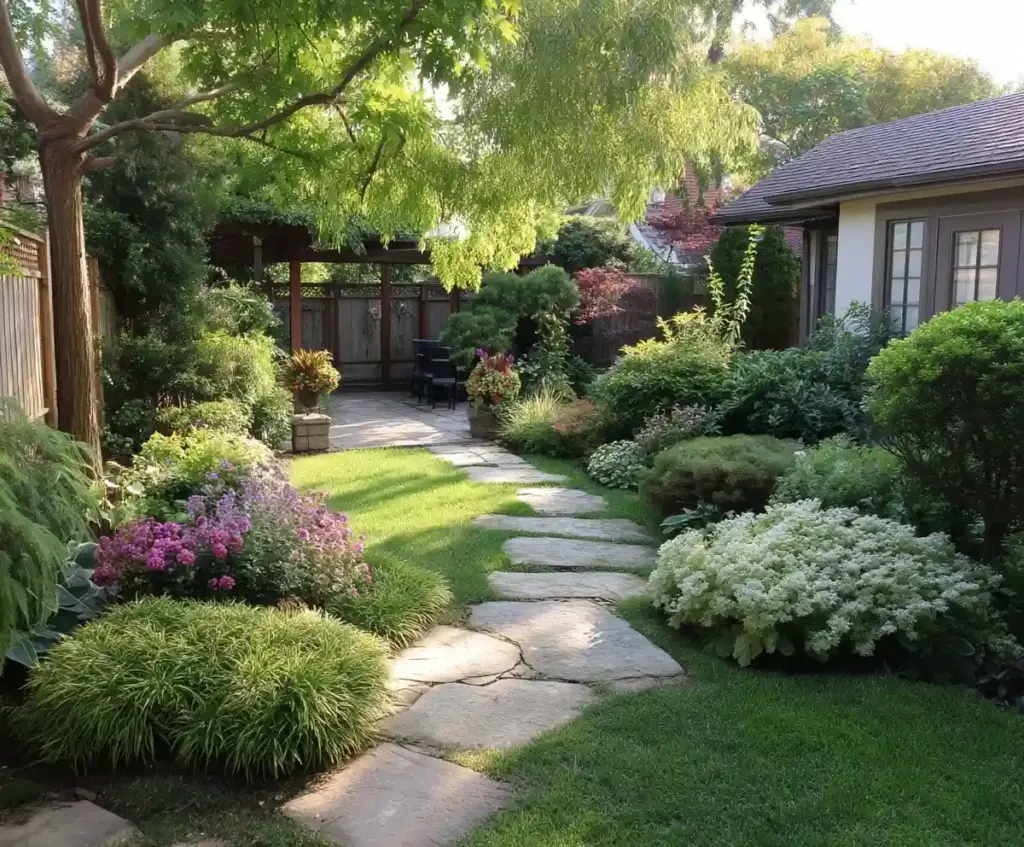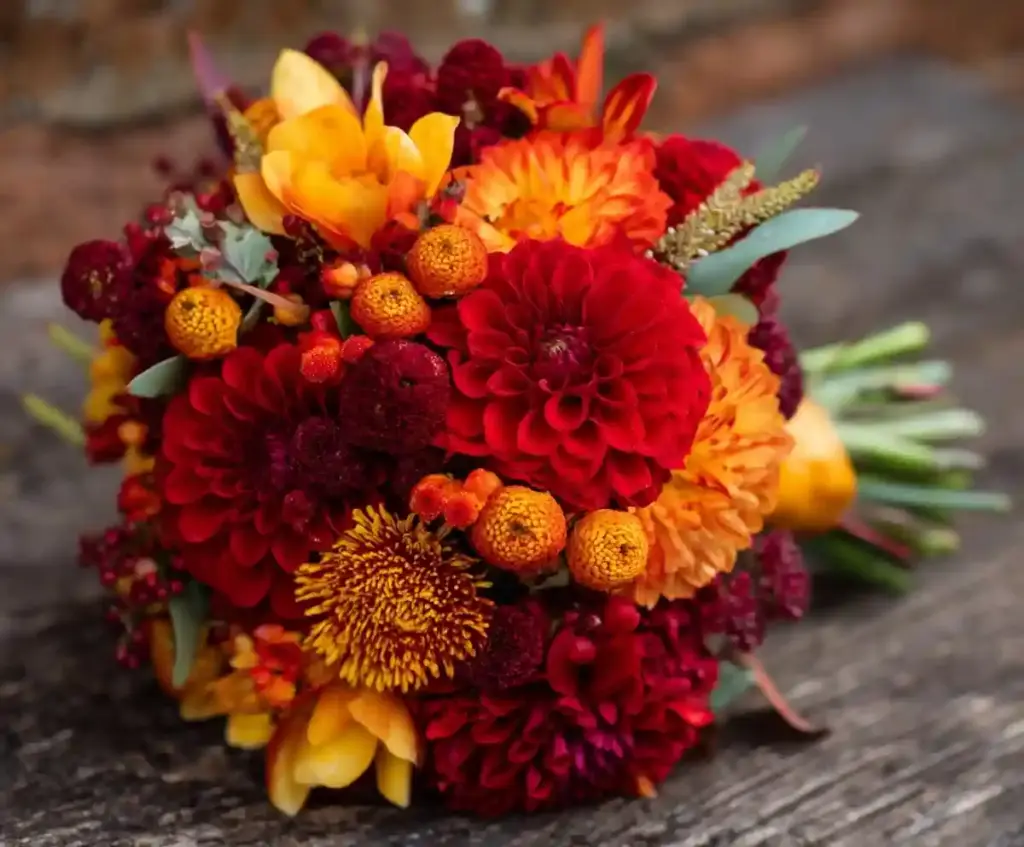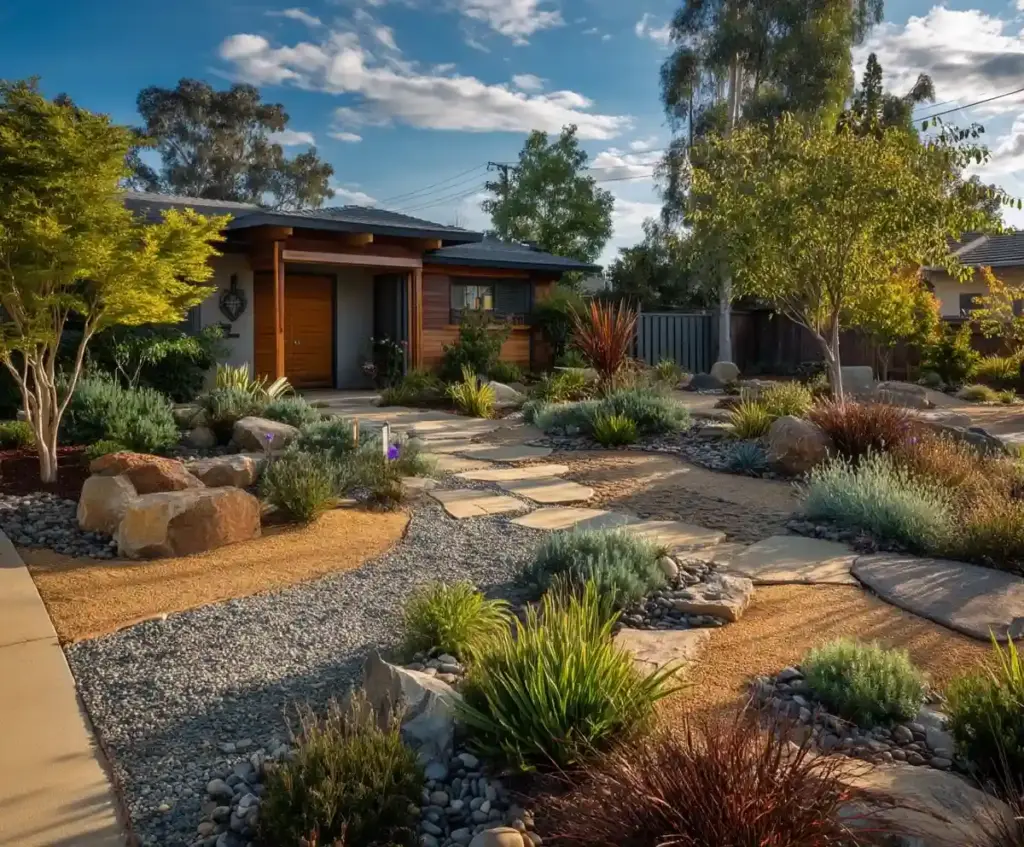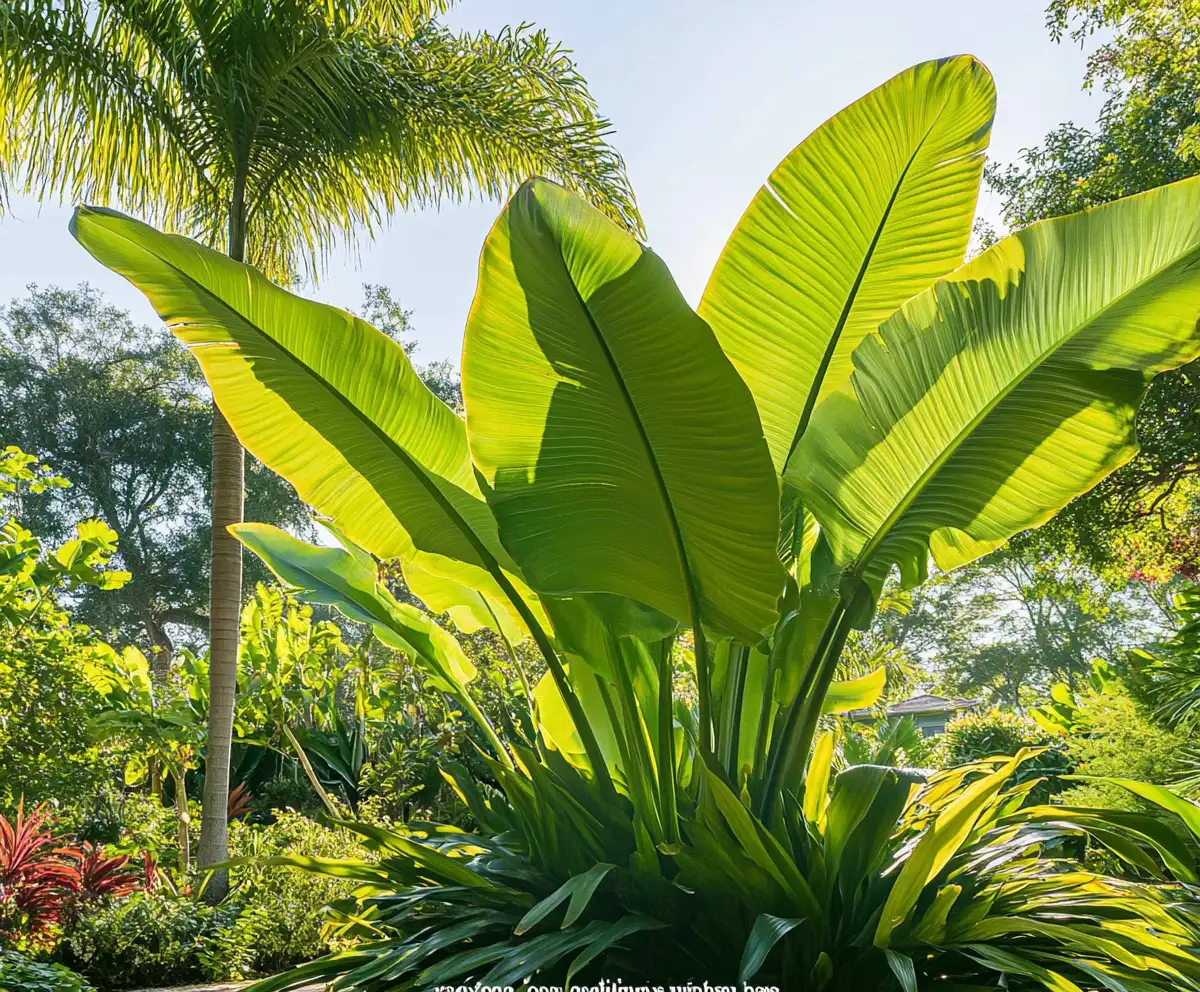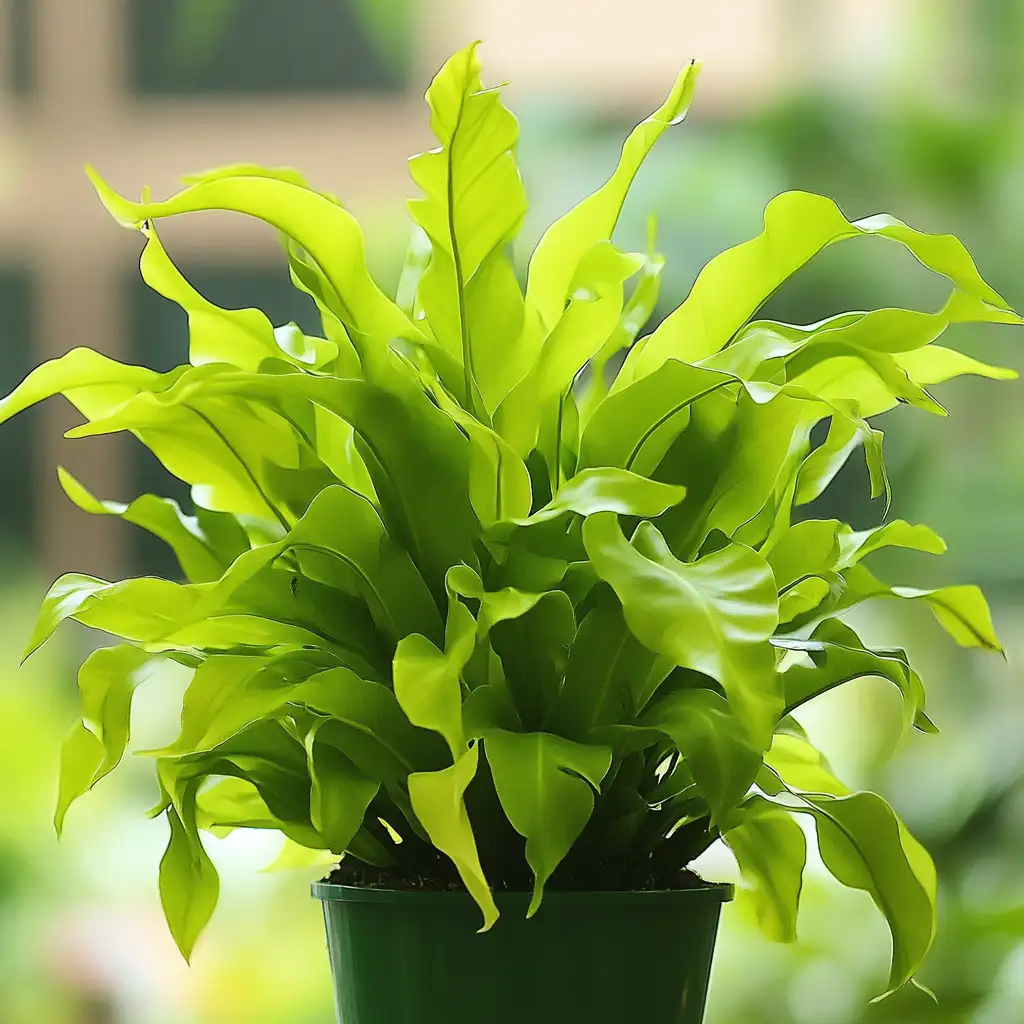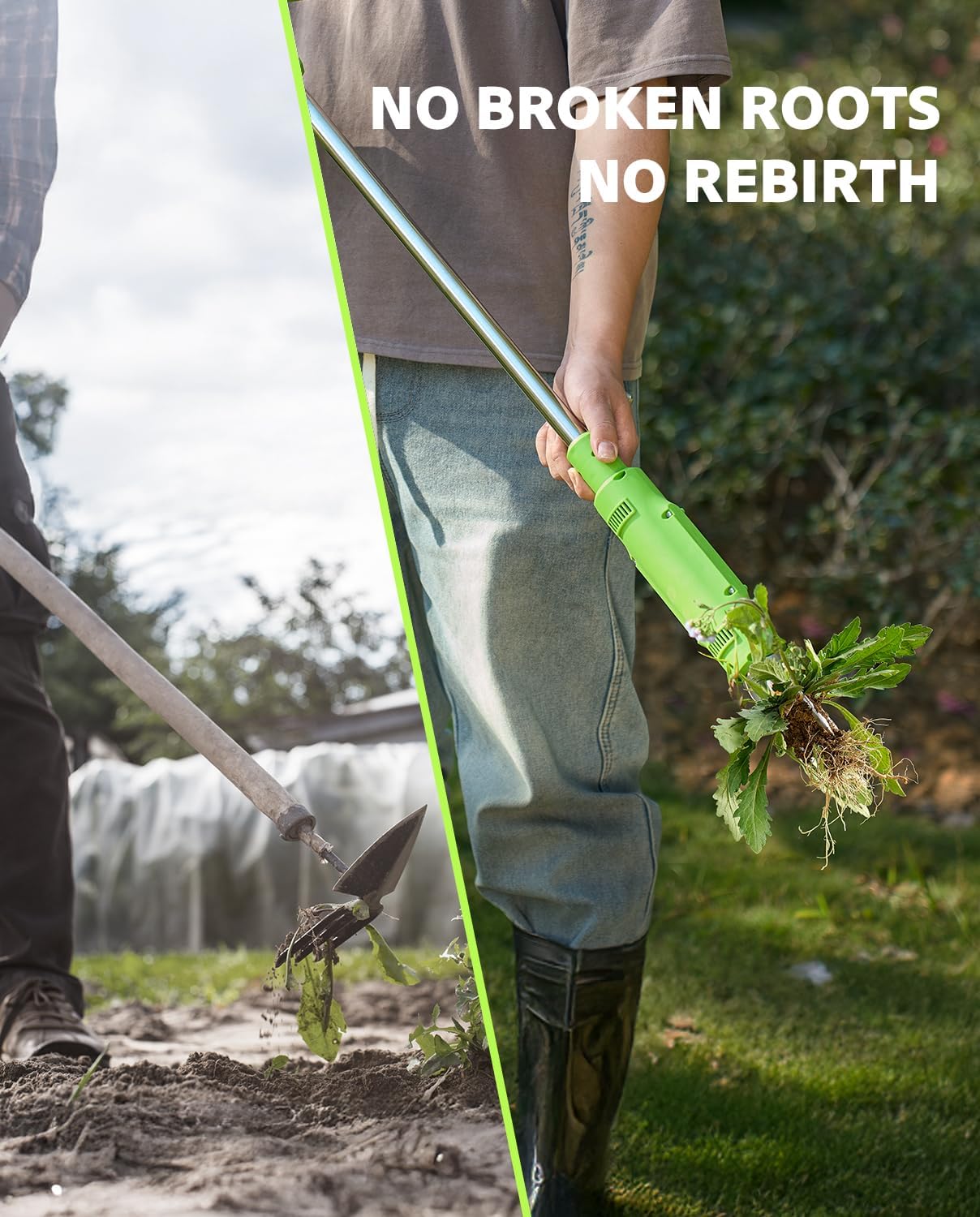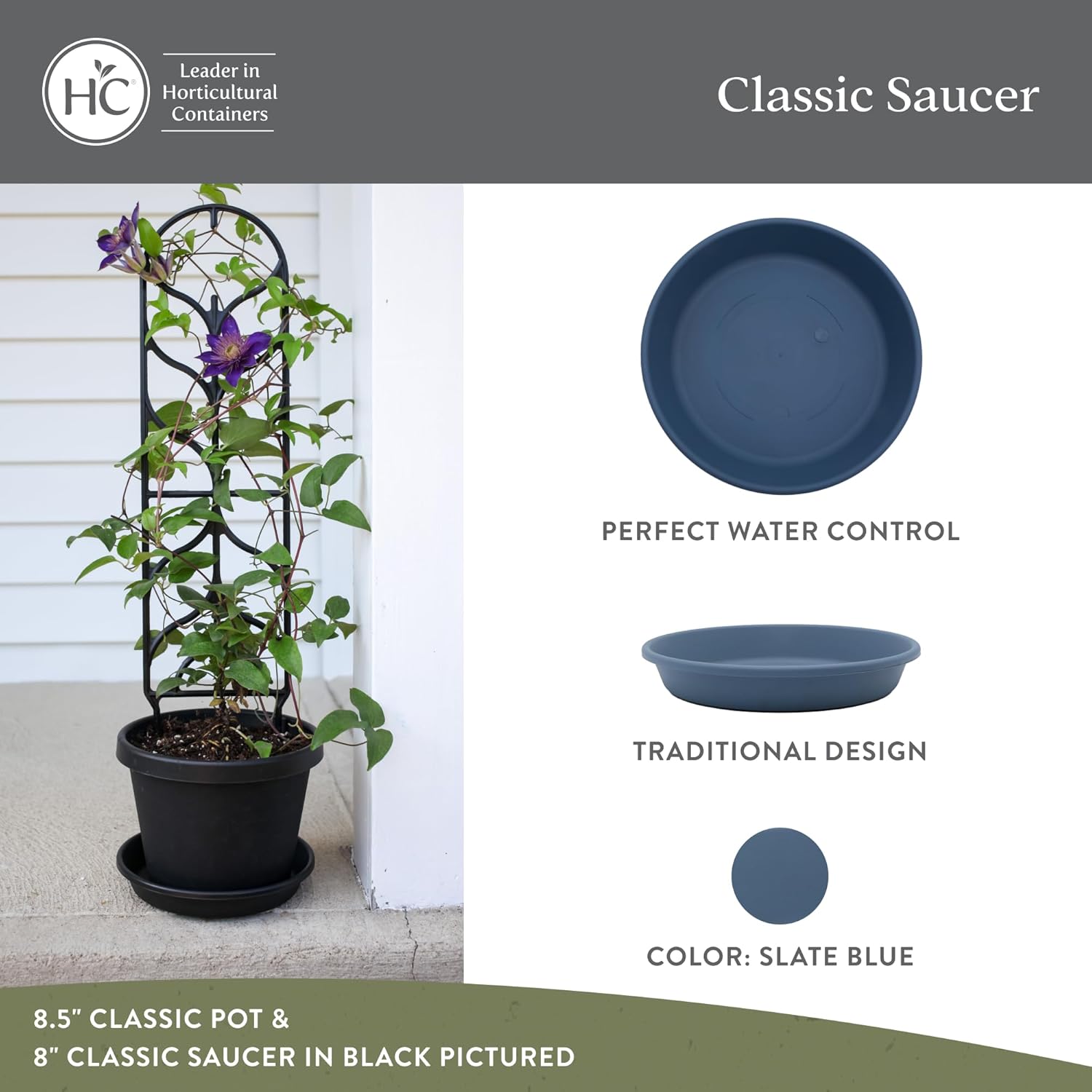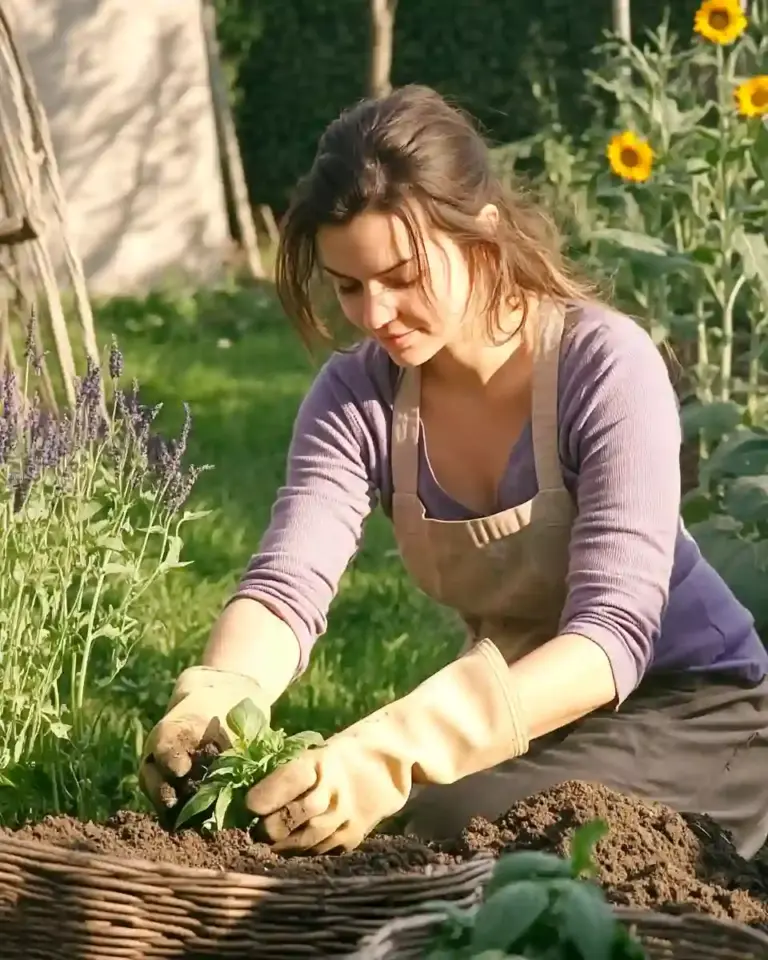Shade-loving gardens are hidden gems in any landscape. Choosing the right tropical plants for shade transforms dim corners into lush, tranquil retreats. Explore indoor plants decor ideas and front yard landscaping ideas for inspiration.
Table of Contents
Bird’s Nest Fern
Bird’s Nest Fern is a true gem for shaded areas in the garden. This lush, tropical beauty features bright green, wavy fronds that fan out in a rosette shape, resembling a bird’s nest—hence its name. Perfect for low-light spots, this fern adapts well to partial to full shade, making it an excellent addition to any shaded garden.
It thrives in consistently moist, well-draining soil rich in organic matter. Regular watering is important, but avoid waterlogging the soil. This plant also prefers high humidity, so misting the leaves occasionally or grouping it with other humidity-loving plants can be beneficial.
Growing to about 2–4 feet tall and 2–3 feet wide, Bird’s Nest Fern adds a striking tropical touch without overwhelming the space. During cooler months, it’s crucial to protect it from frost, so consider bringing it indoors or providing shelter if temperatures drop below 50°F (10°C).
Quick Care Tips:
- Light: Partial to full shade
- Water: Keep soil consistently moist but not soggy
- Humidity: High
- Temperature: Above 50°F (10°C)
- USDA Zones: 11–12
Calathea
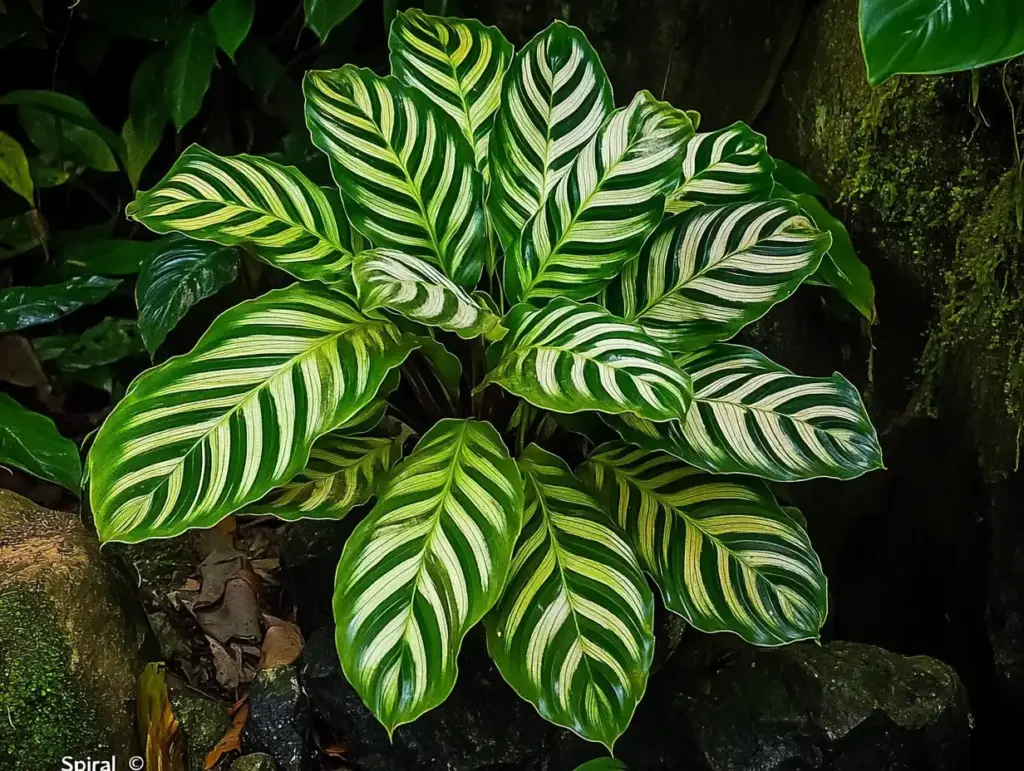
Calathea is a showstopper when it comes to tropical plants for shade. With its intricate, patterned leaves that seem to dance with every breeze, it brings an artistic flair to shaded corners of your garden. Thriving in partial to full shade, Calathea flourishes in high humidity and consistent moisture, making it a fantastic choice for shady, damp areas.
It grows best in rich, well-draining soil that’s kept evenly moist, but not waterlogged. To maintain its lush foliage, regular misting is recommended, especially during dry spells. Fertilize during the growing season with a balanced, water-soluble fertilizer to encourage vibrant leaf color and healthy growth.
Calathea typically reaches heights of 1–3 feet and spreads 1–3 feet wide, depending on the species. Remember to bring it indoors or protect it when temperatures drop below 60°F (16°C). Cold drafts and sudden temperature changes can damage its delicate leaves.
Quick Care Tips:
- Light: Low to medium indirect light
- Water: Keep soil evenly moist; avoid soggy soil
- Humidity: High; mist regularly
- Temperature: 60–85°F (16–29°C)
- USDA Zones: 10–11
Philodendron
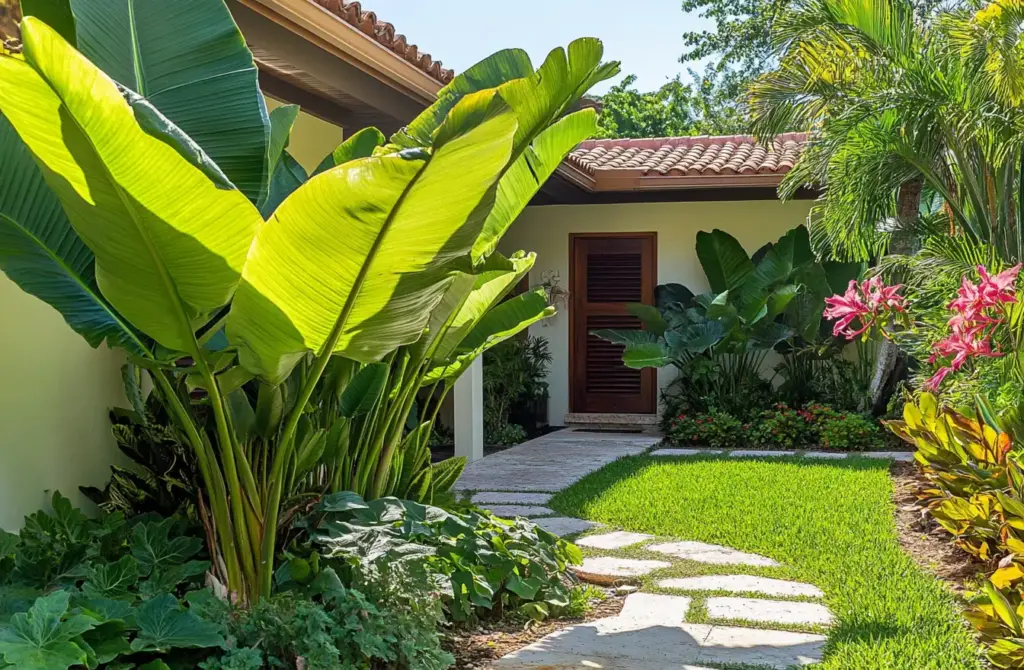
Philodendrons are among the most versatile tropical plants for shade, prized for their adaptability and stunning foliage. These leafy wonders come in many forms, from compact tabletop varieties to large climbers that can reach impressive heights in your garden. With their lush, green leaves, Philodendrons bring a refreshing tropical vibe to shaded areas.
They thrive in partial to full shade, preferring rich, well-draining soil that retains moisture without becoming soggy. Watering should be consistent, allowing the top inch of soil to dry slightly between waterings. Regular feeding with a balanced liquid fertilizer during the growing season encourages robust growth and vibrant leaves.
Philodendrons love high humidity and warm temperatures between 65–85°F (18–29°C). When the temperature dips below 55°F (13°C), it’s best to move them to a sheltered location or indoors to protect them from frost. Occasional leaf cleaning and light pruning help maintain their health and appearance.
Quick Care Tips:
- Light: Low to bright indirect light
- Water: Keep soil moist but allow the top inch to dry between waterings
- Humidity: High
- Temperature: 65–85°F (18–29°C)
- USDA Zones: 9–11
Peace Lily
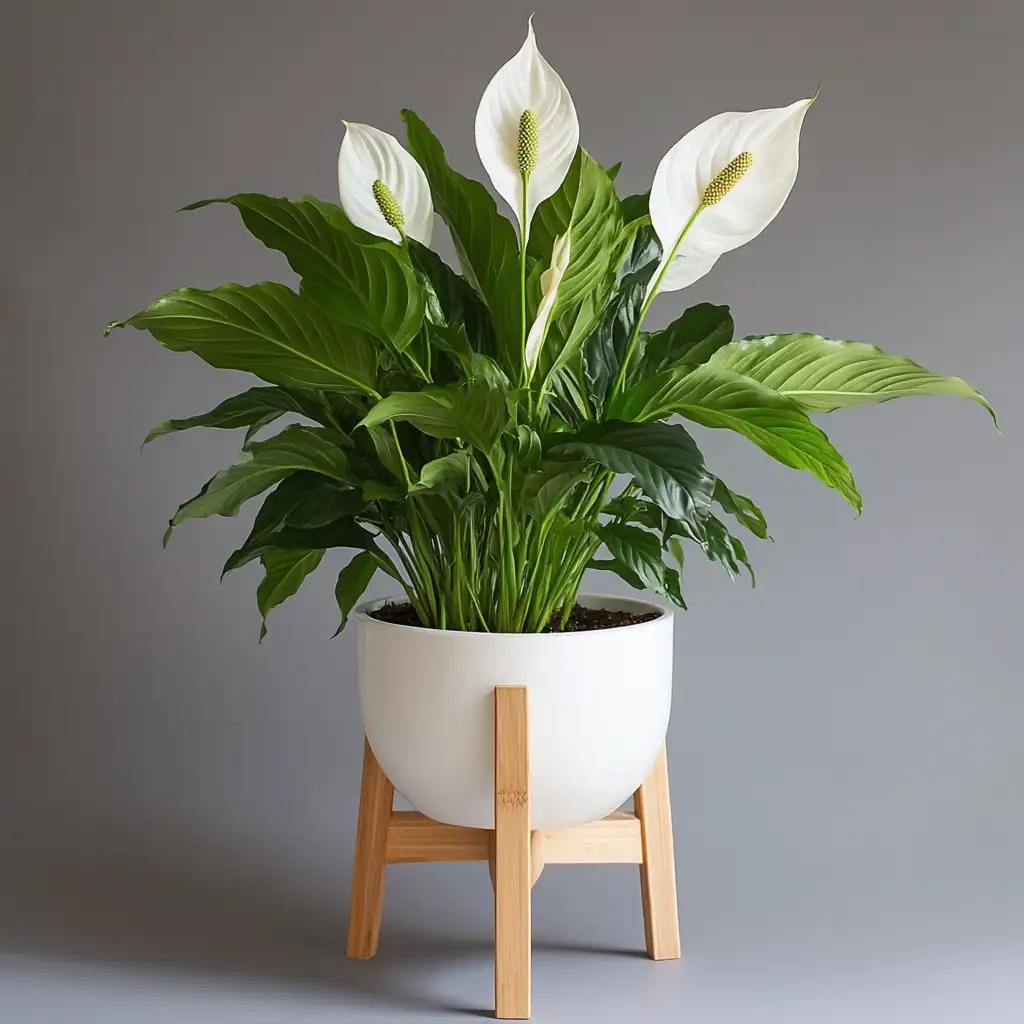
Peace Lily is a popular choice for gardeners looking to fill shady spaces with tropical elegance. Known for its glossy, dark green leaves and distinctive white spathe flowers, this plant thrives in shaded conditions and brightens even the dimmest corners of your garden.
This tropical beauty prefers rich, well-draining soil that stays consistently moist but not soggy. Peace Lilies appreciate regular watering and high humidity, making them perfect for shady, sheltered garden spots. Monthly fertilization during the growing season promotes lush foliage and encourages flowering.
Peace Lilies grow best in temperatures between 65–85°F (18–29°C). When temperatures drop below 55°F (13°C), they must be brought indoors or protected from cold. Their low maintenance needs and air-purifying qualities make them ideal for both gardens and indoor spaces.
Quick Care Tips:
- Light: Low to medium indirect light
- Water: Keep soil moist but not soggy
- Humidity: High
- Temperature: 65–85°F (18–29°C)
- USDA Zones: 10–12
Cast Iron Plant
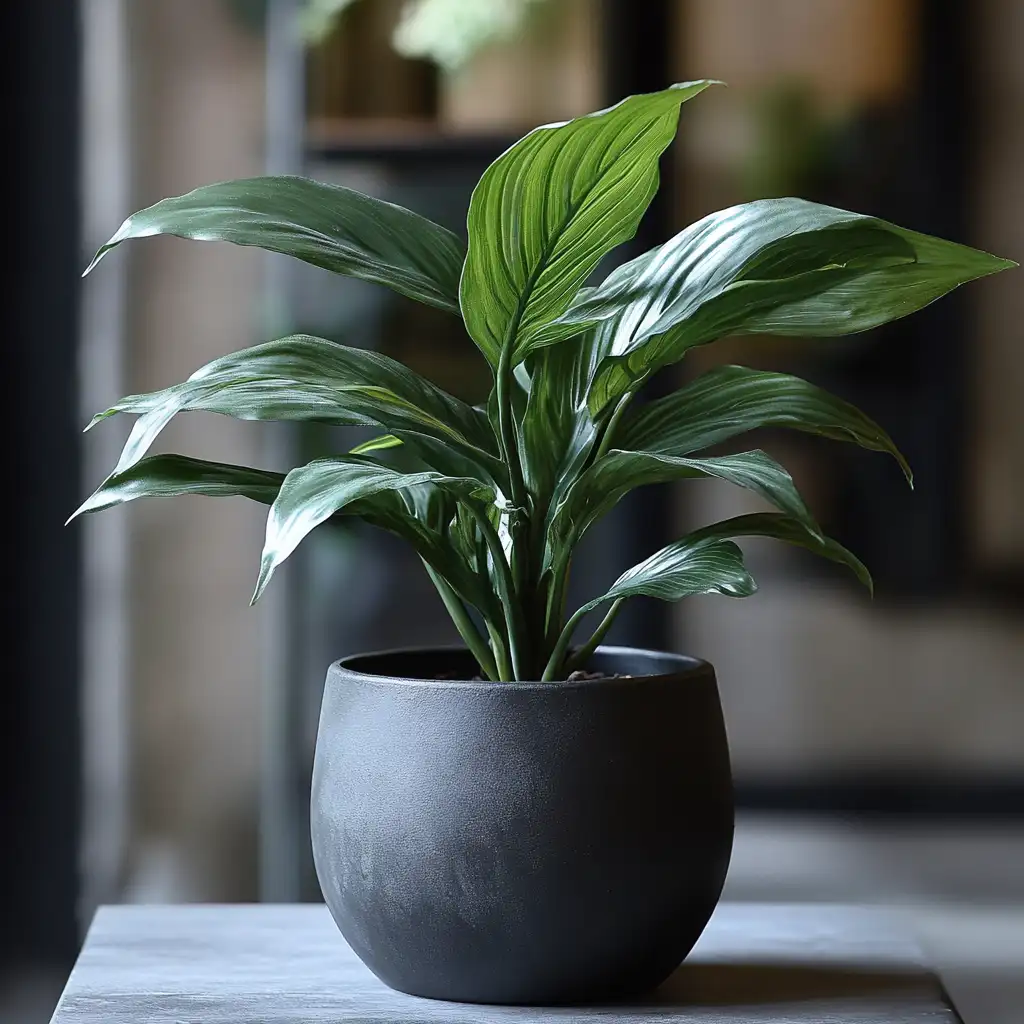
Cast Iron Plant earns its name thanks to its remarkable resilience and adaptability to shady conditions. With broad, dark green leaves that add lush texture to any garden corner, this plant thrives in low-light environments where many others struggle.
Ideal for year-round outdoor growth in many regions, Cast Iron Plant tolerates temperatures as low as 14°F (-10°C) and adapts to a variety of soil types. It prefers well-draining, humus-rich soil and requires minimal care once established. Occasional deep watering during dry spells helps maintain its health.
Though slow-growing, Cast Iron Plant is an excellent option for gardeners seeking a low-maintenance tropical vibe. A light application of fertilizer in spring can encourage new growth, but this hardy plant is content with little attention. Its ability to withstand drought and neglect makes it perfect for busy gardeners or low-maintenance landscapes.
Quick Care Tips:
- Light: Low to medium indirect light
- Water: Water deeply during dry spells; otherwise, minimal watering
- Humidity: Moderate
- Temperature: Down to 14°F (-10°C)
- USDA Zones: 7–11
Chinese Evergreen
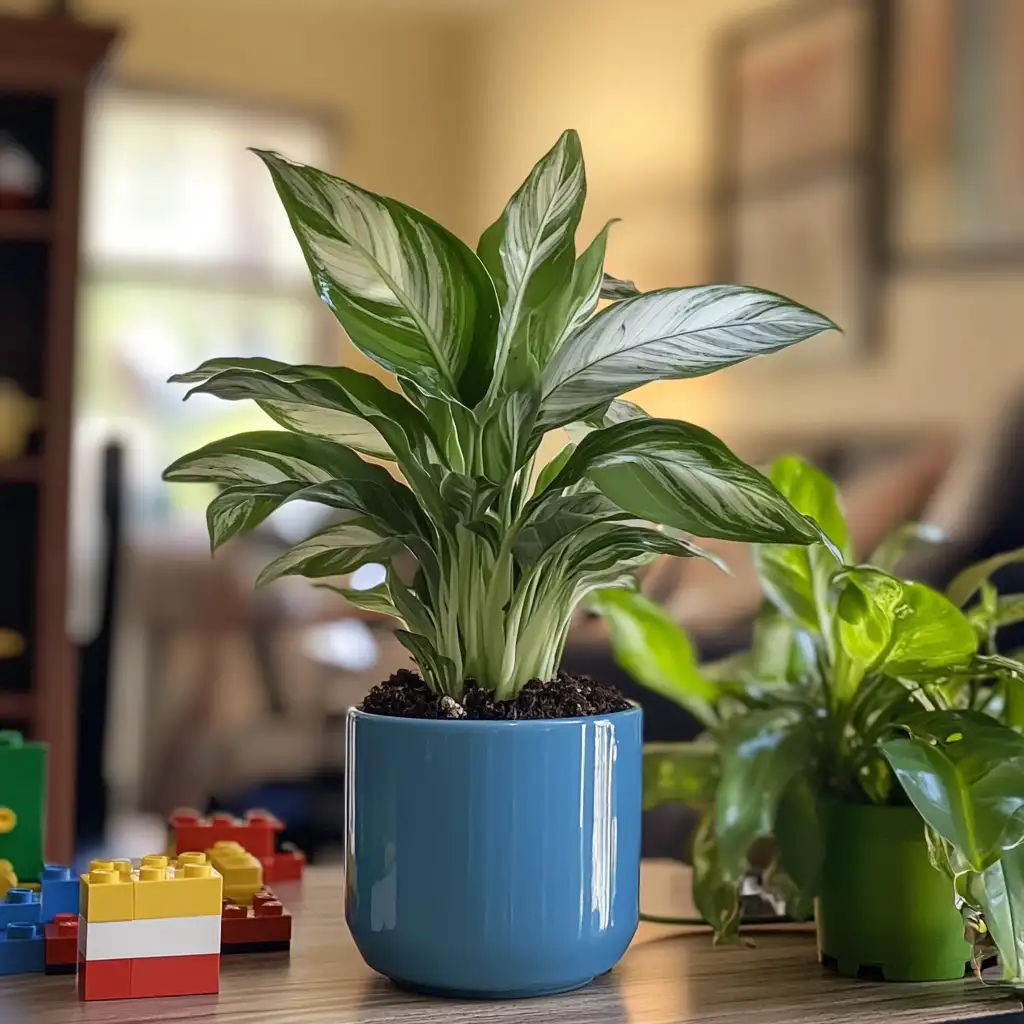
Chinese Evergreen is a versatile and attractive choice for gardeners seeking tropical plants for shade. Its striking foliage, with variegated patterns in green, silver, and cream, instantly brightens up shady garden corners. This plant is incredibly adaptable, thriving in low to medium indirect light and tolerating a range of conditions.
It prefers consistently moist, well-draining soil and enjoys a humid environment, which can be maintained through regular misting or grouping with other humidity-loving plants. Chinese Evergreen flourishes in temperatures between 60–75°F (16–24°C) and should be moved indoors or protected if temperatures drop below 50°F (10°C).
Occasional pruning to remove yellowing leaves keeps the plant looking tidy and encourages new growth. Fertilize every 6–8 weeks during the growing season to support its vibrant foliage and overall health. Its easygoing nature makes it an excellent choice for beginner gardeners or those looking to add a tropical touch to shaded areas.
Quick Care Tips:
- Light: Low to medium indirect light
- Water: Keep soil consistently moist but not waterlogged
- Humidity: Moderate to high
- Temperature: 60–75°F (16–24°C)
- USDA Zones: 10–12
Dracaena
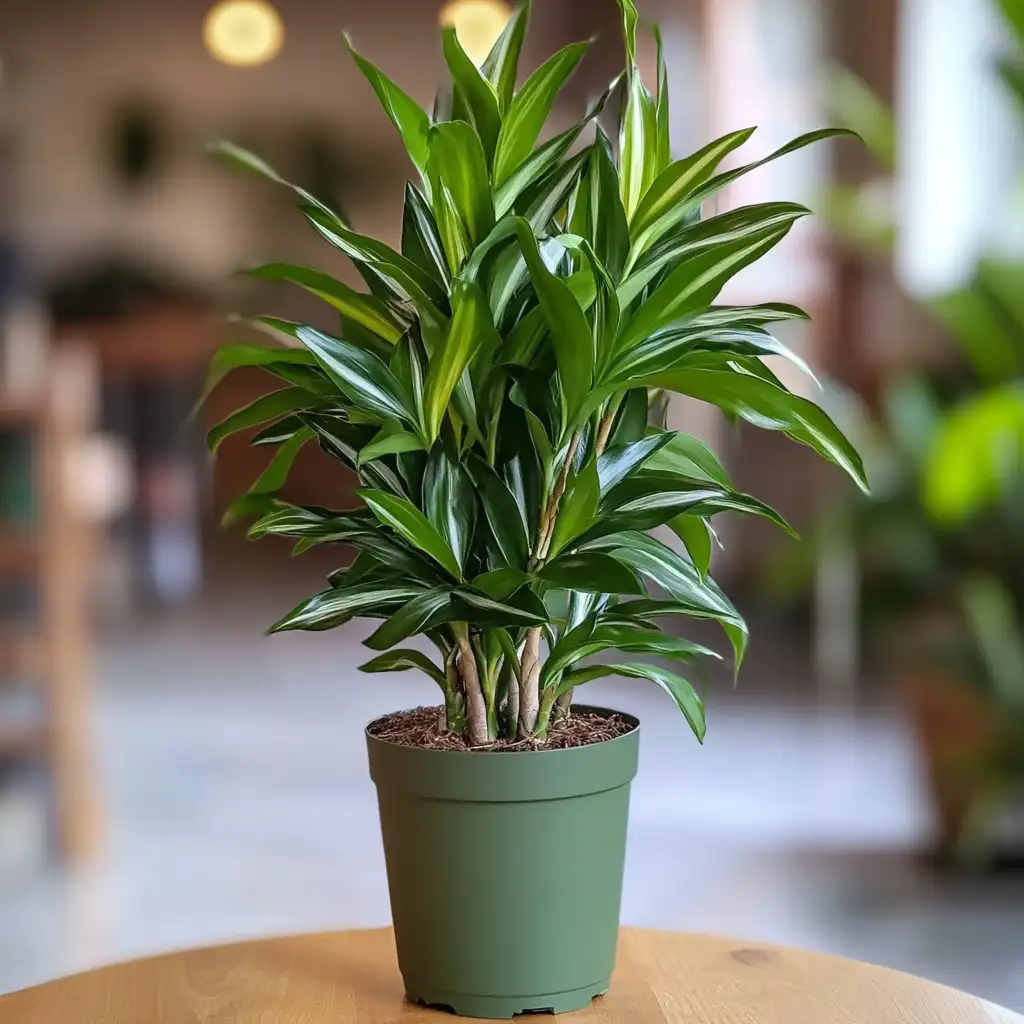
Dracaena is a popular tropical plant for shade that brings height and structure to shaded gardens with its long, slender leaves. This versatile plant adapts well to various light conditions but truly shines in low to bright indirect light, making it an ideal choice for those tricky, dappled corners.
It grows best in well-draining soil that’s kept moderately moist, allowing the top inch of soil to dry out between waterings. Dracaena appreciates high humidity but can also tolerate normal garden humidity levels, though occasional misting during dry spells is helpful. During the growing season, fertilizing every 6–8 weeks supports its lush, upright growth.
Dracaena species vary in size, with some varieties reaching up to 10 feet tall, while others stay more compact—perfect for container gardening or underplanting larger shrubs. It thrives in temperatures between 60–80°F (16–27°C), and when temperatures drop below 50°F (10°C), it’s best to bring the plant indoors or provide protection to prevent cold damage.
Quick Care Tips:
- Light: Low to bright indirect light
- Water: Allow top inch of soil to dry before watering
- Humidity: Moderate
- Temperature: 60–80°F (16–27°C)
- USDA Zones: 10–12
Fatsia Japonica
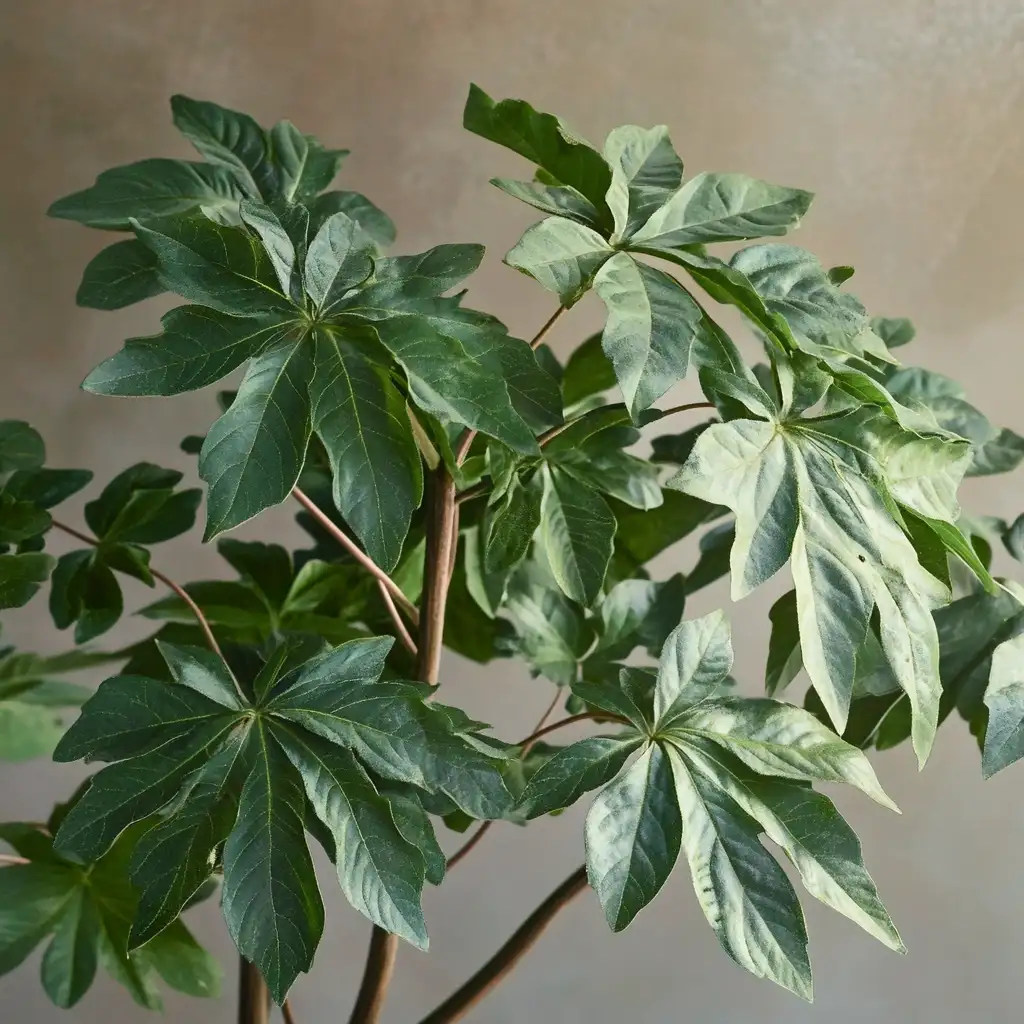
Fatsia Japonica, or Japanese Aralia, is a bold and beautiful tropical plant for shade that adds an instant lush, exotic feel to any garden. With its large, glossy, hand-shaped leaves, it’s a showstopper in even the darkest corners of your outdoor space.
Thriving in partial to full shade, Fatsia prefers rich, moist, well-draining soil and moderate watering to keep it healthy and vibrant. It can tolerate short dry spells, but consistent moisture during dry periods will help it thrive. It grows well in temperatures ranging from 45–70°F (7–21°C), making it a great option for cooler climates as well.
Fatsia Japonica can reach impressive sizes, growing 6–10 feet tall and wide, making it a fantastic choice for adding structure and visual interest to shaded garden areas. Occasional pruning to remove dead or damaged leaves helps maintain its neat appearance. A light fertilizer application in spring and summer encourages lush growth.
Quick Care Tips:
- Light: Partial to full shade
- Water: Keep soil consistently moist, especially in dry periods
- Humidity: Moderate
- Temperature: 45–70°F (7–21°C)
- USDA Zones: 7–10
Maidenhair Fern
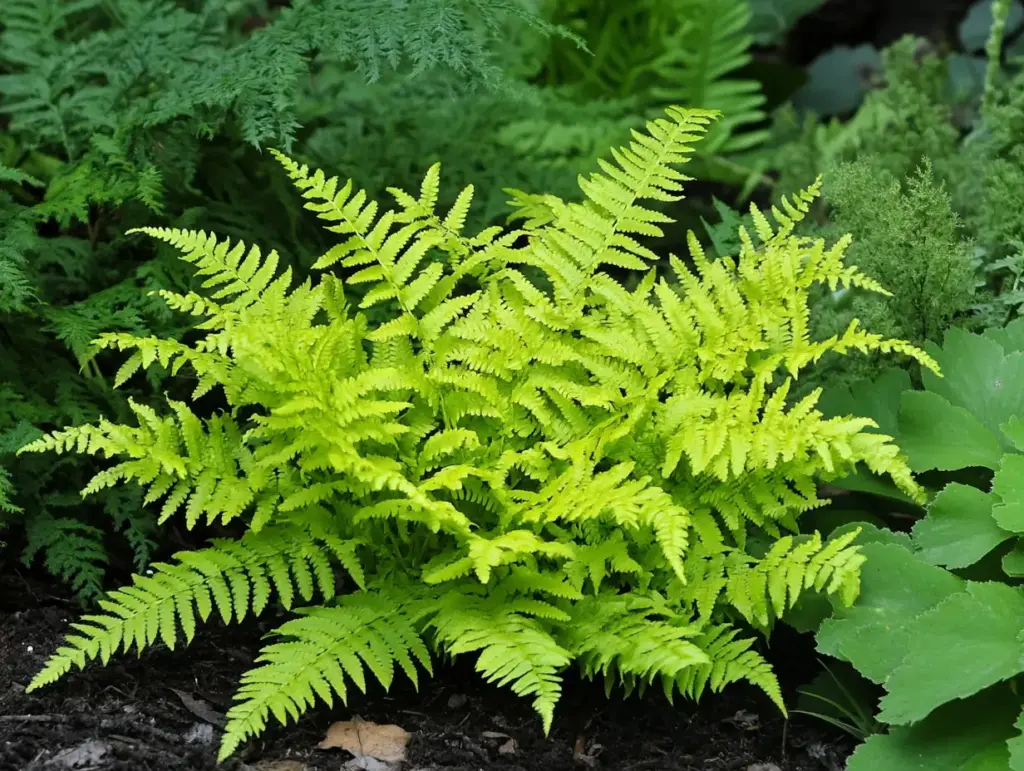
Maidenhair Fern is a delicate and graceful addition to any shade garden, with its soft, lacy fronds that create a light, airy feel in even the darkest corners. Its intricate leaves bring a touch of elegance, making it a favorite among gardeners who appreciate refined foliage.
This fern thrives in partial to full shade, preferring rich, consistently moist soil that drains well to prevent root rot. It grows best in temperatures between 60–70°F (16–21°C), making it ideal for shady, sheltered spots. To maintain high humidity—a key for its lush growth—regular misting or grouping it with other humidity-loving plants is recommended.
Maidenhair Fern is relatively low-maintenance, requiring occasional removal of dead fronds to keep it looking fresh. Fertilizing lightly in the spring helps promote healthy growth, but too much fertilizer can damage its delicate roots. Perfect for planting in shady beds, hanging baskets, or as a soft ground cover, this fern enhances the tropical ambiance of your garden.
Quick Care Tips:
- Light: Partial to full shade
- Water: Keep soil consistently moist but not waterlogged
- Humidity: High; mist regularly
- Temperature: 60–70°F (16–21°C)
- USDA Zones: 9–11
Conclusion
Choosing the right tropical plants for shade can transform any dark, overlooked corner of your garden into a lush, green sanctuary. From the hardy Cast Iron Plant to the elegant Maidenhair Fern, there’s a shade-loving tropical plant to suit every gardener’s style and space. By providing these plants with the right soil, moisture, and protection from extreme temperatures, you’ll enjoy a thriving, vibrant garden all year long. For additional inspiration, consider exploring our drought-tolerant plants or perennial flowering plants that add lasting beauty to your landscape. Remember to embrace the unique needs of each plant, and your shady garden will reward you with beauty and tranquility for years to come.
FAQ
Can tropical plants really thrive in shade?
Absolutely! Many tropical plants, like Bird’s Nest Fern, Calathea, and Peace Lily, naturally grow in the understory of tropical forests where light is limited. These plants have adapted to thrive in partial to full shade, making them perfect for shaded garden spots.
How can I maintain humidity for my shade-loving tropical plants?
Regular misting, grouping plants together, or placing a humidity tray nearby can help maintain the humidity these plants love. Some gardeners also use pebble trays or small fountains to create a humid microclimate.
What’s the best soil for tropical plants in shady areas?
Most tropical plants for shade prefer rich, well-draining soil that stays consistently moist but not soggy. Adding organic matter like compost helps improve soil structure and water retention.
Should I fertilize tropical plants in shade?
Yes! Most tropical plants benefit from monthly feeding during the growing season with a balanced, water-soluble fertilizer. Just avoid over-fertilizing, which can harm sensitive roots.
🌿 Love gardening inspiration? Follow me on Pinterest for bold plant ideas, tips, and seasonal color!
More Posts
